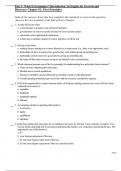Tentamen (uitwerkingen)
TEST BANK Macroeconomics 4th Canadian Edition Paul Krugman; Robin Wells, Iris Au and Jack Parkinson (CHAPTERS 1-18)
- Vak
- Instelling
Test Bank for Macroeconomics 4th Canadian Edition Paul Krugman; Robin Wells, Iris Au and Jack Parkinson (CHAPTERS 1-18) Macroeconomics, Canadian Edition Test Bank / Macroeconomics Fourth Canadian Edition Test Bank. 9781319245474, 9781319331559 Test Bank / Krugman 14E Test Bank For Macroeconomics.
[Meer zien]




